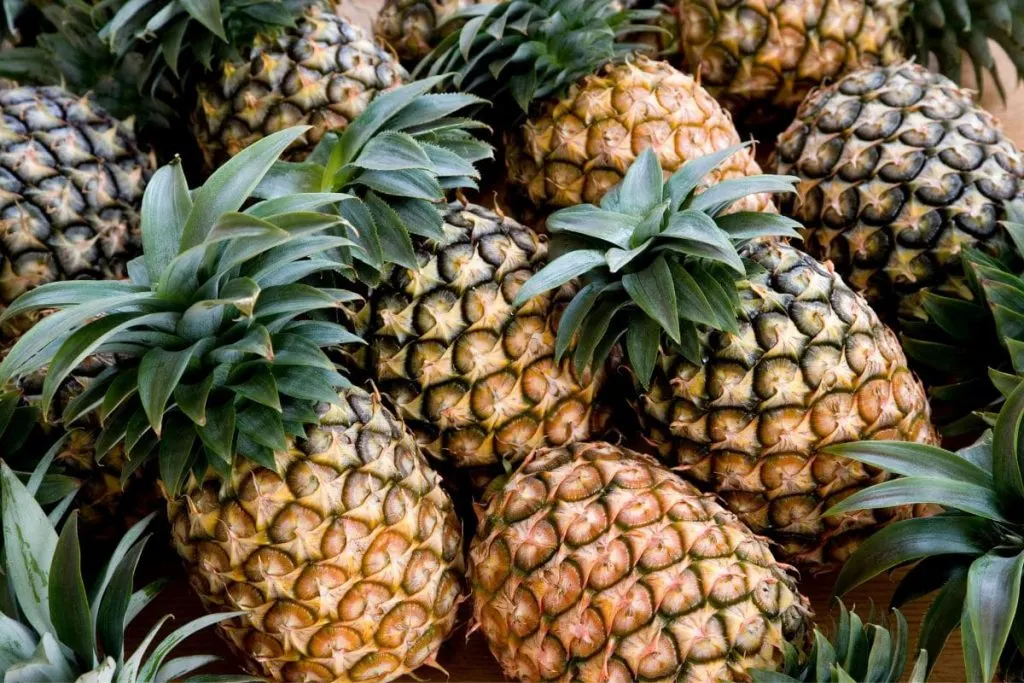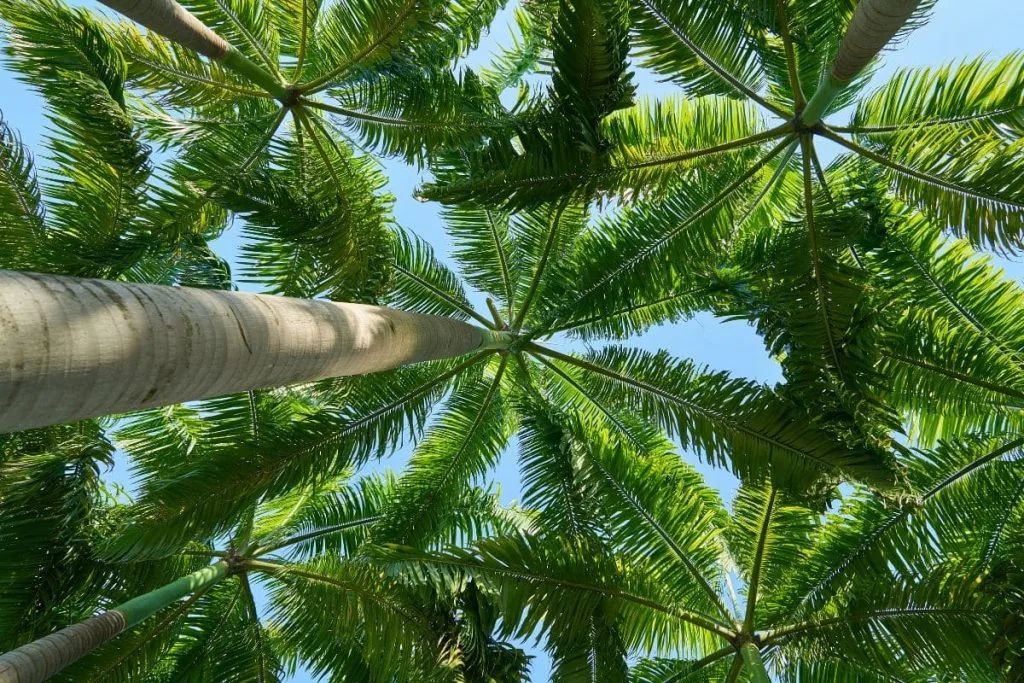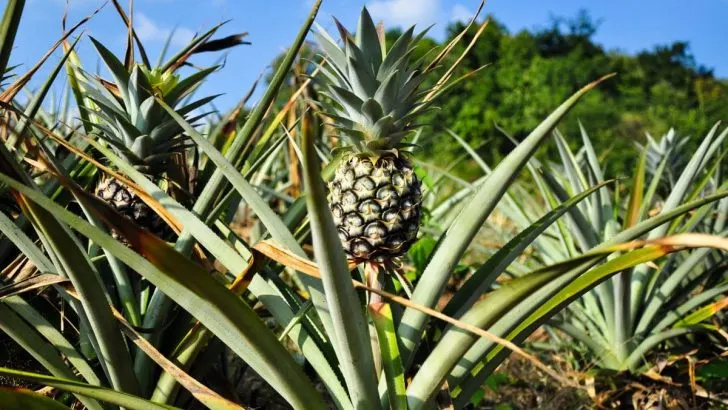If you didn’t hear about the pineapple palm tree before, today you’ll learn everything about it. We will provide you with a simple care guide for pineapple trees. In addition, you’ll learn its botanical features and growing habits as well.
What makes pineapple palm tree leaves so interesting and why this durable palm attracts so many people? It is one of the most famous garden palms that provide shade for your yard.
Along with that, this tropical palm is well known for its unique look. Its trunk is among the most interesting palms in the world.
You will probably see it in Florida, California, the Canary Islands, and even Australia. Palm has a super interesting texture and its leaves are dark, raw, and long. Its cultivation is very simple and usually is for palm species.
If you’re ready to plant this amazing palm in your yard, let’s learn all about its care guide.
About Canary Island Palm Tree

If you’re thinking about getting this plant for your yard, maybe its the best to learn more about its appearance. Below, before its care guide, learn all about their appearance and growing habits. Once you see this, we’re sure you’ll want this plant in your yard 100%.
- Native habitat: Canary islands
- Botanical name: Phoenix canariensis
- Common names: Often confused with the bismarck palm tree, Canary island date palms
- Family: canary island date palm comes from an Arecaceae family
- Subfamily: Arecaceae
- Flowers: formal appearance, vibrant colors
- Leaf shape/color: green leaves, dark green fronds
- Fruits: they have a fruit, spread with seeds from the fruits and flowers, fruits are edible but not tasty, and they don’t grow pineapples as some people assume
- Use: ground cover, landscape plant, beach tree, pool tree (because of the shade they make), etc.
- Toxicity: some say the tree is certified disease free, and some say they are poisonous if digested, tip: don’t let your pets near it, be careful.
- USDA zone: agriculture plant hardiness zones-cold hardy
- Growth rate: moderate growers when planted in the right location, grow around 20-24 inches per year
- Growing season: spring, early summer
- How and where to grow: light shade, moist soil, full sun in the morning.
Pineapple Palm Trees Care Guide

In order to decide to purchase a plant, you first want to know everything about the care of that plant. If the plant is too demanding, not everyone will find time to take care of that plant.
Fortunately for you, the pineapple palm is one of those easy plants and you’ll forget you have it in your garden. However, in order for her to grow successfully, let’s learn about her simple care guide.
Where To Plant Pineapple Palm tree?
How Much Pineapple Palm Trees Cost?
Light Conditions
It is best to plant this beauty in a location a little further from the house, about 6 feet away. Due to its long and wide branches, objects or other plants could interfere with its growth. Therefore, take this into account right from the start and make the right decision.
When it comes to light, combine shades with direct sun. This combination of light will allow the plant to grow perfectly. A break from the sun in the afternoon and mild morning sun.
This combination leads to rapid growth without consequences and healthy leaves. Too much time in the sun can easily scorch its leaves. And I know that nobody wants a pineapple palm tree with damaged leaves in the garden.
Watering Schedule
The best way to water these plants, in the beginning, is to flush them. If you don’t know how to flush plants without overwatering them, make sure you read about it first.
Most people make mistakes because they create excess water conditions for the plants then. To avoid this, carefully read the text about the proper flushing of plants.
If you don’t want to risk it, water it once a week. In periods of high heat and strong sun, you can water it every 5 days, but in the morning. Follow this schedule strictly and you won’t go wrong. A similar watering schedule has also the triangle palm, or the areca palm.
Type Of The Soil
Sand is the most favorable type of soil for all types of palm trees. If you really want to make your pineapple palm tree happy, give it sand.
When you see palm trees on beaches or other locations, what kind of soil are they planted in? Of course, sandy soil.
If the whole land around them is not sandy, they are separated into large pots or containers with sand. Sand is soil that retains moisture for a long time, which is what tropical palms need.
Fertilizer
Although this plant does not need to be fertilized, I know people who do. There will always be people who will not obey the rules. Some even claim to notice differences after fertilization. That may not be entirely incorrect.
However, palm trees are wild plants in tropical countries and on tropical islands. They certainly don’t have fertilizers in the jungles and on the faraway islands, and yet they grow so tall.
The highest pineapple palm is currently in the Canary Islands and it is a wild plant. Did this plant need fertilizer?
Temperature
This is easy to guess because all tropical plants love high heat. This is also the case with this plant. It will not grow healthy and well in regions with a temperature of 55-60 F.
The best growing conditions are between 70 and 85 F. Bright sun and plenty of water, these are the perfect conditions for this plant to grow.
Humidity Levels
You don’t have to think about humidity that much. The average level of humidity will suit it, which is about 50%. However, too low humidity will affect the appearance of its leaves.
Pruning
Practice pruning in the spring and when the plant experiences damage. Too much exposure to the sun causes damage to the leaves, so prune them.
Sharp scissors, never break leaves by hand because you do more damage. To encourage its growth and “branching”, prune it in autumn and once in spring.
Propagation
The propagation of this plant is simple. Practice taking seeds from flowers in the spring, which you will store in a dry place.
When the sowing time comes, prepare the soil for planting. Let it be sandy soil previously irrigated.
Some people keep the seeds in the sun the night before for extra success, so try that too. When you plant them, water them with a little water and leave the pot in direct sunlight.
This time, do not put the container in the shade. After 4-5 weeks you will see the seeds germinate.
Do Pineapple Palms Have Invasive Roots?

Pineapple palms don’t have invasive roots. Most people consider palm plants with invasive roots because some species do have such roots.
This is why because some types of palm trees in California and types of palm trees in Florida have this kind of roots.
Final Thoughts

How did you like our article about the pineapple palm tree? Are you now thinking about getting this pineapple palm tree for your yard?
If you need a tree that will cast a great shadow, and at the same time be tall and beautiful, this is your tree. To succeed in planting, do everything as we have recommended.
We do not recommend deviations from their emperor guide because then errors occur. All deviations lead to less success in planting and that is your fault, unfortunately.
Palm trees, even low-maintenance ones, want their original planting steps respected. When you do this, expect a free-standing tree 60 feet tall, shiny and healthy in the garden.
That would be all for today. See you soon with similar topics.

